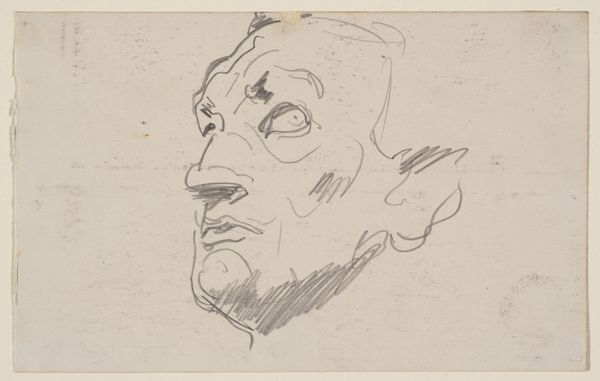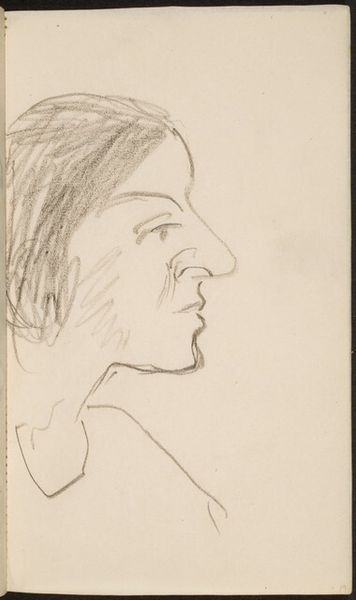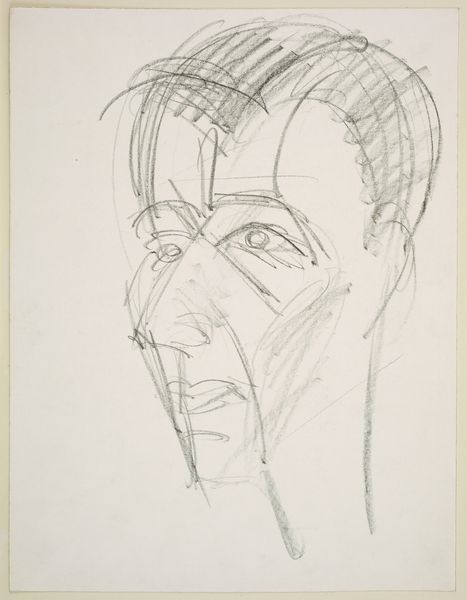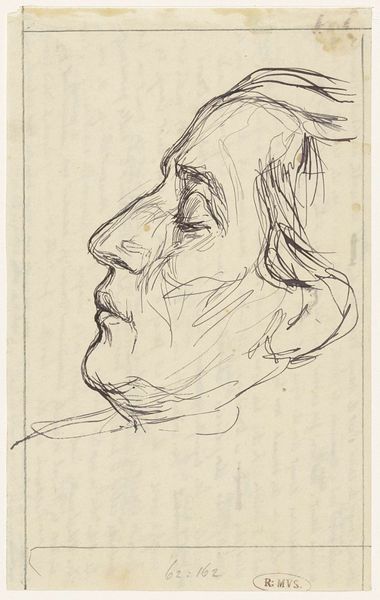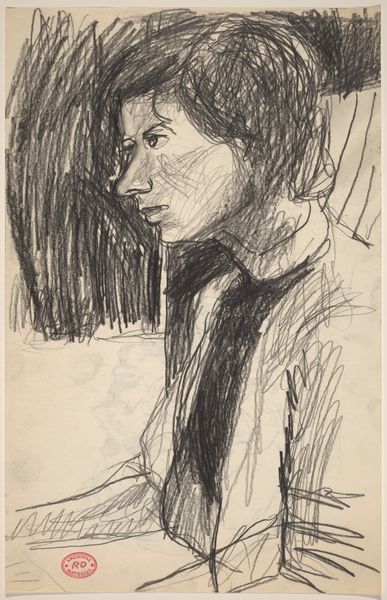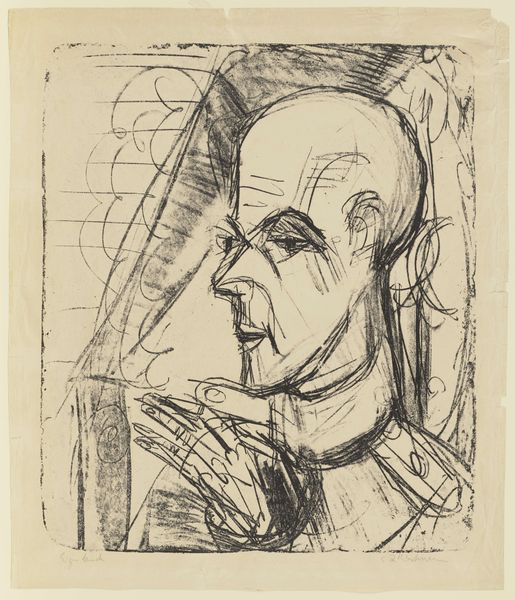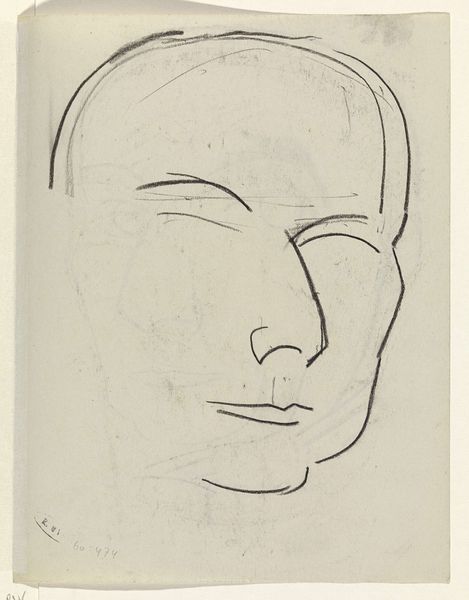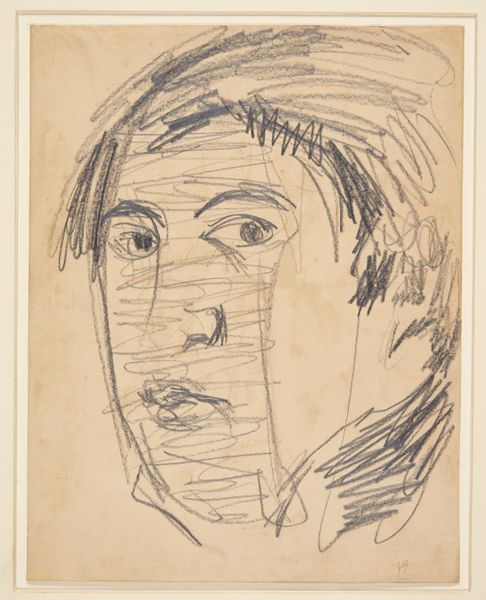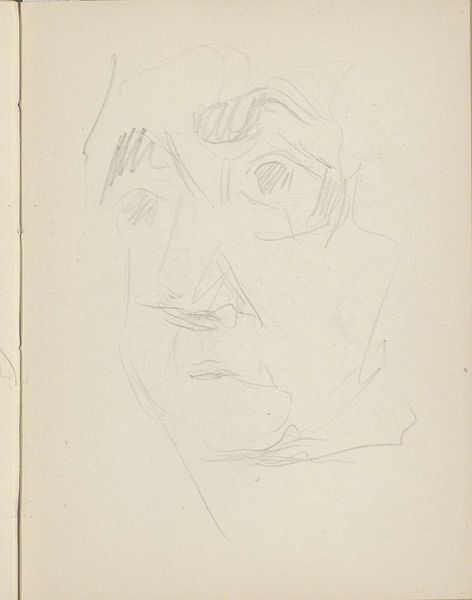
drawing, print, pencil
#
portrait
#
drawing
#
ink drawing
# print
#
pen sketch
#
pencil sketch
#
pencil
#
portrait drawing
#
academic-art
#
profile
#
realism
Dimensions: 11-1/4 x 8-7/8 x 1/2 in. (28.6 x 22.5 x 1.3 cm)
Copyright: Public Domain
Curator: This is a page from Felicien Rops’ “Notebook with sketches and notes," dating from 1833 to 1898, held at the Metropolitan Museum of Art. The drawing employs pencil, ink, and potentially printmaking techniques. What’s catching your eye here? Editor: Well, first off, this sketch feels intensely immediate. The visible pencil strokes and the quick shading give it a sense of raw observation. It makes me wonder who this person was, and what Rops was thinking as he captured this profile. Was he just practicing, or was this a preparatory study for a larger work? Curator: Considering Rops' wider practice, let's not dismiss that question about practice. We know his production of prints and drawings was immense and covered all manner of subject, but he often returns to themes around the social status and gendered expectations placed upon people within rapidly shifting class systems during his lifetime. What’s depicted and *how* its depicted, materially speaking, tells us a great deal about not just the subject of his gaze, but its audience as well. Editor: That makes me consider it through a different lens. The subject's face—particularly the brow and mouth—almost seems burdened. If this *is* a reflection on social status, I’m drawn to consider this subject in the context of class conflict and alienation. How would his material conditions inform not only Rops’ artistic process, but the sitter's lived experiences too? Curator: Indeed, and we should ask: how are works like this made accessible for different audiences? Are the socio-historical dynamics transparently discussed in museums and educational resources? Whose stories are told, and whose are erased? Editor: Right. Are we empowering viewers to draw their own critical conclusions, or are we reinforcing traditional hierarchies of taste and judgment that silence important alternative narratives and political arguments? Curator: Precisely. Even a seemingly simple sketch carries enormous weight, reflecting and refracting social tensions. We can better understand how such a work is situated and seen to generate much broader awareness for more equal experiences in art-making and interpretation. Editor: Looking at it again, I now find this sketch is both an artistic exercise and a social document that’s speaking volumes across the centuries. Curator: Exactly, this dialogue is the heart of materialist art analysis!
Comments
No comments
Be the first to comment and join the conversation on the ultimate creative platform.
